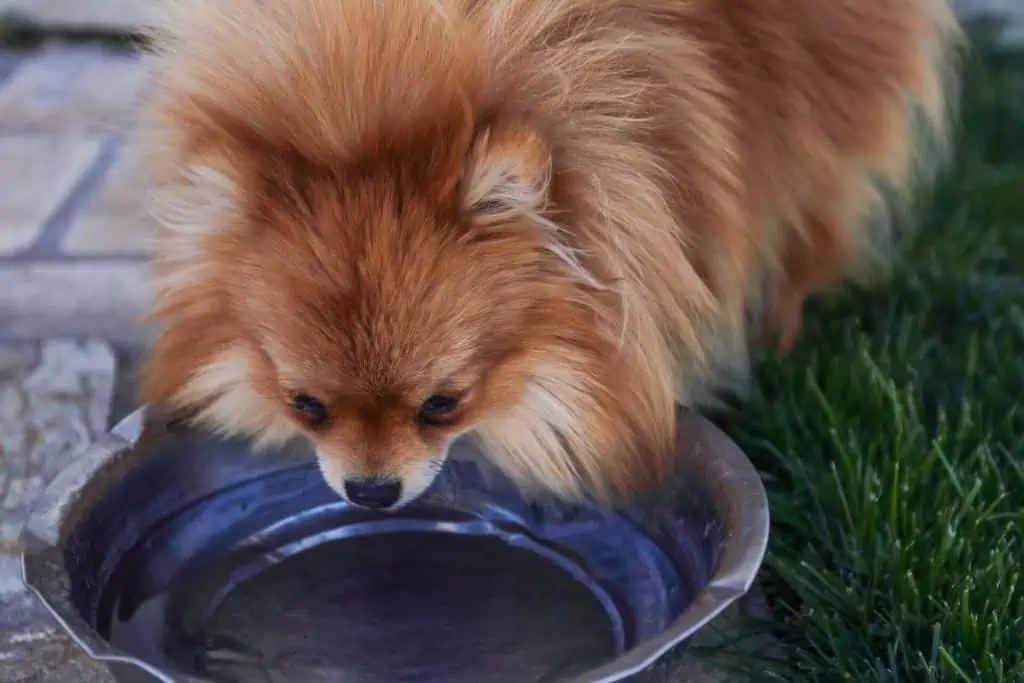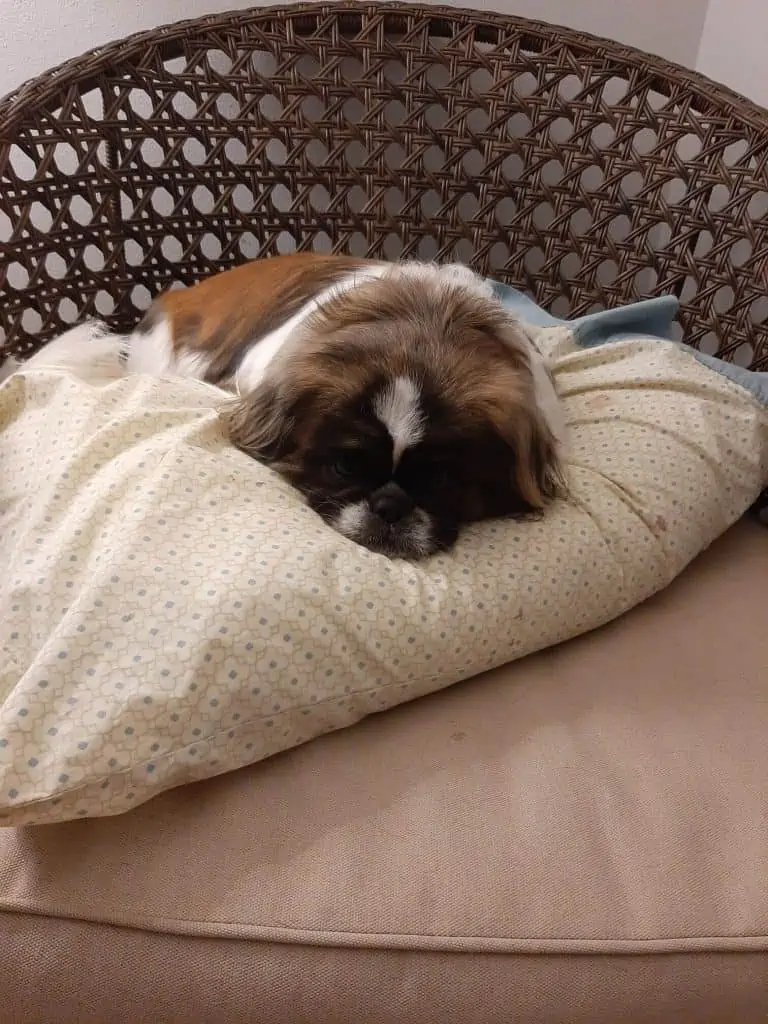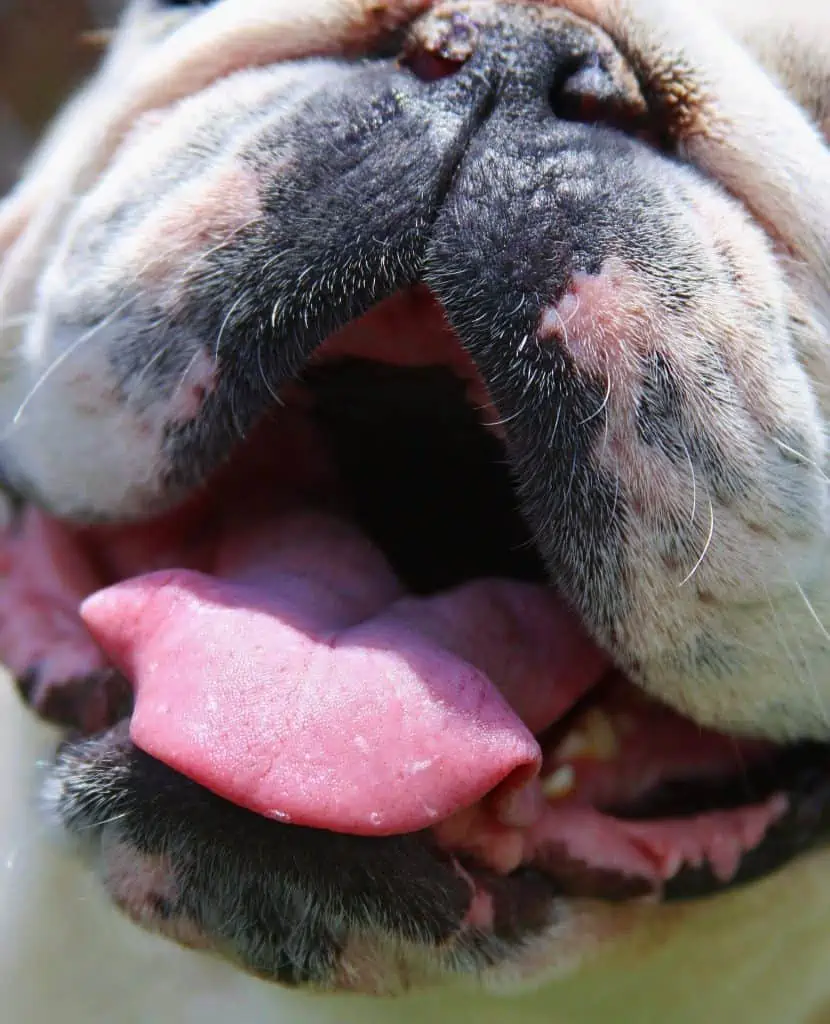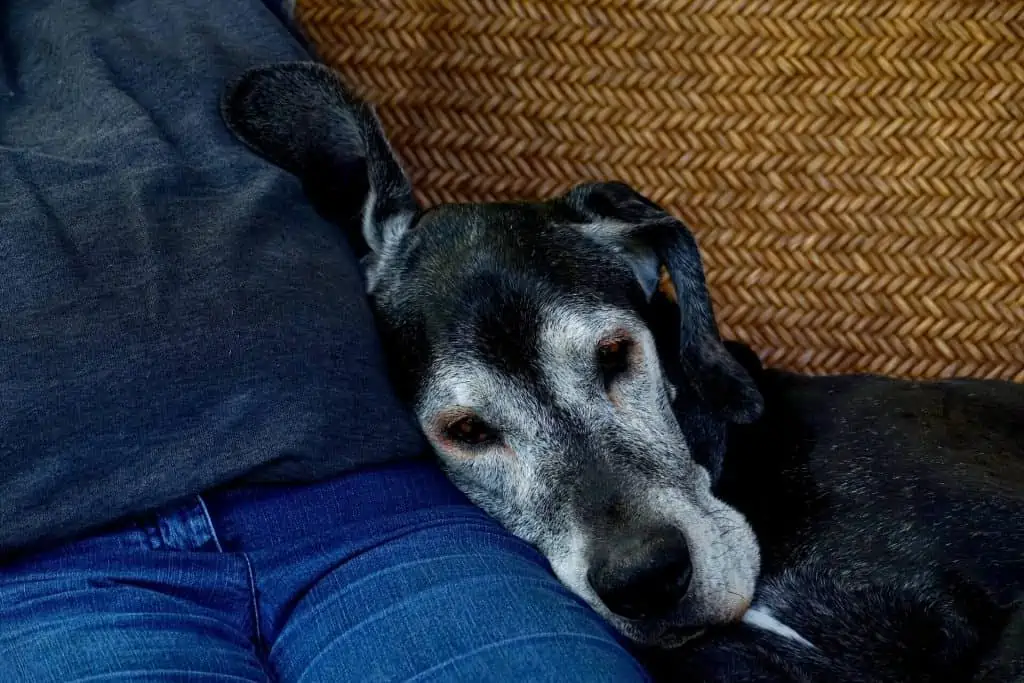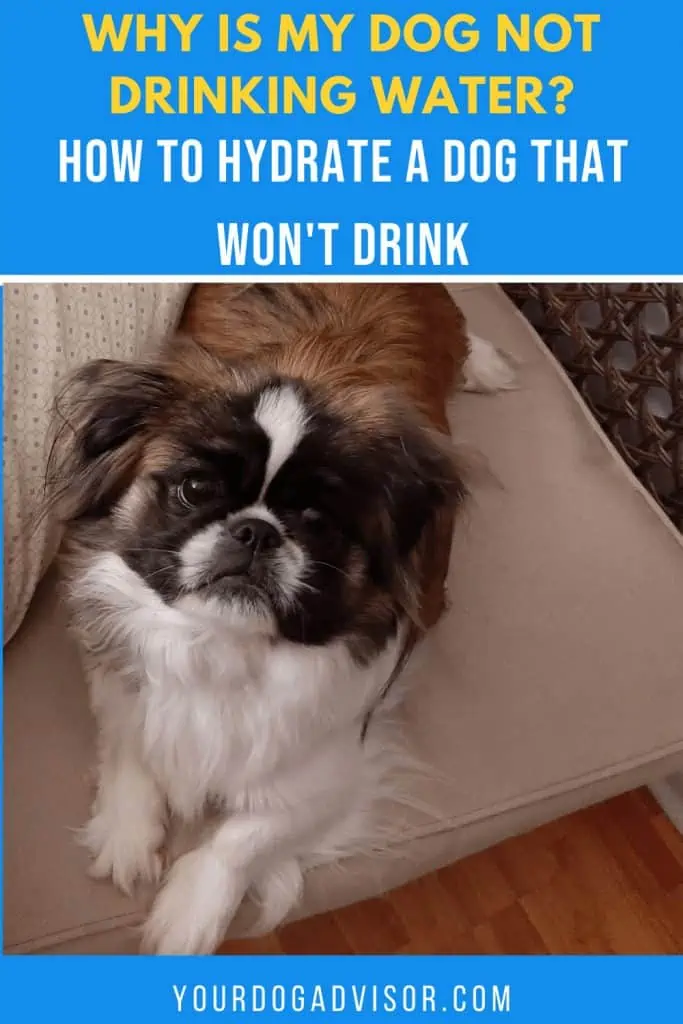Water is important. Living things can’t function for long without it. So if your dog is suddenly refusing to drink water, it can quickly become a serious problem.
There are many reasons why your pup may be refusing water. They could be sick, or there could be something wrong with their water bowl. There could be something wrong with the water itself. It’s also possible that they’re getting some water from wet food already and just don’t need as much.
Whatever the reason is, it’s essential to find out what’s going on quickly and to keep an eye on your pup’s condition. It’s also important to call the vet if you can’t get them to take water. Dogs can survive up to 72 hours without water, but don’t wait longer than 24 hours before reaching a vet if you can’t get them hydrated.
Contents
How Much Should Your Dog be Drinking?
Exactly how much water your pup needs a day can vary. Smaller breeds don’t need as much water as large breeds. It depends on body weight. They should generally be drinking around 20-40 ml of water per pound of body weight each day.
If your companion is spending a lot of time outside or moving around a lot, they’ll need more water than an inactive, indoor dog. You especially need to be careful about dehydration if you live in hot temperatures. They need to be hydrated enough to avoid heatstroke.
How much water your dog needs depends on how big they are and how active they are.
How to Check if Your Dog is Dehydrated
If your pup gets dehydrated, they’ll show a few symptoms. You can easily check them if you’re worried.
A few symptoms of dehydration include:
- Sunken eyes
- Dry, sticky gums
- Dry mouth
- Thick saliva
- Dark, smelly urine or less frequent urinating
- Reduced energy
- Loss of skin elasticity
To check for dehydration, you can check the gums right above your dog’s teeth. Try pressing a finger to their gums. If your pet is hydrated they’ll turn white and immediately go back to pink when you pull away.
To test skin elasticity, you can try the skin tenting test. Pull up on the skin between the shoulder blades. If a dog is hydrated, the skin will immediately fall back into place. If they’re dehydrated, the skin may take longer to return to normal.
Certain breeds have different skin elasticity, which can make the skin tenting test difficult. You should know your dog’s usual skin elasticity before trying the skin tenting test for the most accurate results.
Water Quality
If your dog is refusing water, check where the water is coming from and the quality. If there’s debris or other unhealthy things in it, they won’t touch it.
Make sure you’re replacing their water with fresh, clean water often. If they’re refusing water, try replacing the water in the bowl with fresh water. The water in their bowl may be dirty.
They may not be as picky about water as we are, but that doesn’t mean they want to drink something that tastes disgusting. If your area’s water quality isn’t good, try giving them bottled water instead of tap water from the sink. If needed, try various water sources to see what they’ll accept.
My general rule is that if the water isn’t good enough for you to drink, you shouldn’t be giving it to your furry friend either. I have mine drinking the same filtered water my family and I use. If we don’t have any, she gets bottled water.
If your puppy isn’t drinking, check the quality of the water you’re giving them and switch if needed.
Bowl Cleanliness and Placement
If your dog’s water bowl is too dirty, they may not be willing to drink out of it. You don’t like drinking out of filthy cups either, right? It’s not healthy and probably doesn’t taste as good.
Make sure you’re cleaning your pup’s bowl regularly. Put it under some soap or baking soda and hot water and scrub any buildup off of it as much as possible. If it’s dishwasher safe, put it through the dishwasher to sterilize it.
If your pup ignores their water right after you’ve moved the bowl, there’s probably something wrong with that spot. They may associate a certain area with a bad experience, especially if another pet got in a fight with them or resource guarded.
Offer multiple sources of water in different locations to see where they will and won’t go. You can eventually remove some water bowls that aren’t being used, but it’s better to have too many sources than not enough.
If your companion suddenly stops drinking water, the bowls should be among the first things you check. It’s possible you just need to wash them or replace the water.
Environmental Changes and Anxiety
If you just brought a new dog home or made some big change in your household, they may be too nervous to go to their water bowl for a while. Environmental changes can cause anxiety and make it hard for your pup to let their guard down.
They may also not feel comfortable enough to drink if there’s something scary like a thunderstorm or fireworks going on.
Once things calm down, they should start drinking again. Try offering some water from your hand to encourage them.
If you suspect that their anxiety is causing severe problems, make sure you find ways to manage their anxiety.
Environmental changes can cause anxiety, making a dog too worried to drink water.
Food Types
There are multiple types of dog food. Dry food and wet food are two of the most common.
Dry food is the common kibble that a lot of us feed our furry friends. They’re small, dry pieces of food with no water in them. On the other hand, wet food has water and other liquids like gravy in it.
If your pup is eating wet food regularly, they may be getting some of the necessary water from that. If you’ve recently been feeding them wet food and you notice that they aren’t drinking as much, it’s probably not a reason to panic. They just don’t need as much water since they’re getting some water from their food.
That said, while they don’t need as much, they shouldn’t stop drinking water completely. Wet food alone is not enough to keep them hydrated.
If you think your pup’s not getting enough water, wet food is a good way to at least get some water in their system. You can mix it in with their dry food or give it to them as is.
Oral Problems
Like us, dogs don’t want to eat or drink much when their mouths hurt. It could be from a broken tooth, a mouth tumor, or a jaw fracture. Whatever it is, it hurts and they don’t want to open their mouth much to get water even if they need to.
Make sure you’re getting your companion’s mouth and teeth checked at the vet often and get your pup’s teeth cleaned often. If they aren’t drinking or eating, check for bad breath as it can be a sign of an oral problem.
If you suspect that there’s anything wrong with your pup’s mouth, get them to the vet so they can determine the best treatment.
Oral problems like a broken tooth can make it hard for a dog to drink or eat.
Illness
If your furry friend is sick, they probably won’t want to drink water, even if it’s what they need. They’ll be especially reluctant if they’re nauseous.
It’s hard to tell when they’re nauseous since they can’t tell us. If your pup is also not eating or if they’re throwing up, they may be nauseous.
Plenty of things can cause nausea, including heatstrokes. Make sure you’re keeping them cool. It can also be caused by kidney disease and other diseases like pancreatitis.
Kidney disease can cause a dog to drink more or less water than usual in the early stages. If your companion is drinking less water or even more, check for other signs like weight loss, vomiting or diarrhea, blood in urine, lethargy, decreased appetite, or mouth problems.
Two-thirds of the kidney is already dysfunctional by the time kidney disease makes itself known, so it’s important to get to the vet ASAP to mitigate the damage if your pet has it.
Water contamination can cause kidney disease and other problems, so make sure the water your companion is getting is clean and healthy. Again, if you can’t drink it, neither should your furry family member.
If you think your companion is sick, get them checked out. Don’t take any chances. Lack of thirst, lethargy, lack of appetite, and vomiting are big red flags.
Age
Older dogs may drink less water. They’re not as healthy and energetic as they used to be, and getting to water may be hard. Their sense of thirst could also be fading.
If your senior is having trouble staying hydrated because they don’t move around much, it’s especially important to have multiple water sources, preferably close to where they usually lay around.
It can also help to change up their food. You can try adding wet food to their diet so that they’re still getting some water at dinner time. Just make sure you’re careful about introducing new foods. It’s best to slowly introduce the food by adding small amounts first. Sudden changes in food can upset their stomachs.
Older dogs may have more trouble staying hydrated.
Getting Your Dog to Drink
Whatever the cause is, you want to get your pup some water before any major issues crop up from dehydration. Besides the few mentioned before, there are some small things you can try.
Offer Water from Your Hands
A stubborn pup may come right up and lick water out of your hands (or anything else you directly offer) even if they’re ignoring the bowl. Try cupping your hands and getting as much water as you can, then bringing it directly to your companion.
Offer Ice Cubes
Ice cubes aren’t necessarily a substitute for a bowl of water, but they can help keep your pup hydrated if they’re ignoring their water but still eating. They may see the ice cubes as cold treats rather than water.
You can also try putting the ice cubes in the water bowl to encourage them to drink out of it.
Add Water to Food
If your pup’s appetite is still fine, adding water sources to food can be a good way to get some water in their system. This probably won’t work if your pup is also refusing food.
You can add some wet food to their usual meal and even add some more water or broth to that.
[amazon box=”B008NHLZ2Y” style=”light” title=”Cesar Soft Wet Food” template=”widget” ]
Add or Change Bowls
If your dog is refusing water out of a certain bowl, they may not like the material of it. They may prefer steel bowls or other types of bowls.
Adding bowls can give your pup a variety of water sources and keep them from having to move far to get to the water. This can be especially important if they’re older and find it harder to move or another pet is in the house competing for water.
You may also want to consider getting a water dispenser or a water fountain. Fountains can provide constant fresh water, and some dogs may prefer it to normal bowls.
[amazon box=”B08NCDBT7Q” style=”light” title=”Veken 95oz/2.8L Pet Fountain” template=”widget” ]
Syringe
If nothing seems to be working and you’re really getting worried, you can try getting water to your companion through a syringe. Fill it with water and place it between your pup’s cheek and teeth and slowly dispense the water. Be careful and stop the second they seem to choke or gag. If they successfully swallow it, you can wait five minutes and try again.
That said if they’re too weak to drink and you’re at the point of trying to force water into them, it’s time to call the vet.
When in Doubt, Call the Vet
If your companion is refusing to accept water no matter what, get them in to see the vet immediately. Do not let any longer than a day go by, no matter how much you or your companion hate it. Dehydration can be a killer and refusing water could be a sign of a larger problem.
A vet can get your pup water through an IV if needed. They can also check for any health issues that may be causing them not to hydrate themselves.
There are multiple things you can try to get your pup to drink water. Call the vet if nothing is working and your dog is still refusing water.
Keep Your Dog Hydrated
It can be worrisome when your companion refuses to hydrate themselves. We know how important water is to keep our body functioning, and it’s no different with dogs. They normally won’t let themselves get dehydrated, so if they do, something is wrong. There could be something wrong with the water or bowl or they could be in pain.
If your dog suddenly starts refusing water, check their bowls to make sure they’re clean and check that the water you’re giving them is clean. Don’t give them any water you wouldn’t drink yourself. They may not only reject it, but they may also get sick from it.
Offer multiple bowls, especially if they’re older or have competition from other pets in the house. If they’re avoiding certain bowls, consider what they’re made out of as some won’t accept anything out of certain types of bowls. If they’re still eating, try adding water to their food through wet food or broth.
If you can’t get your pup to accept water after trying for about 24 hours, call the vet and get them in as soon as possible. They can technically last 72 hours without water, but they’ll start to feel the effects of dehydration long before that.
If you leave them dehydrated for too long, they’ll start to grow weak, so don’t waste any time getting them to the vet if you can’t get them hydrated. In the worst-case scenario, the vet can get water into their system through an IV.
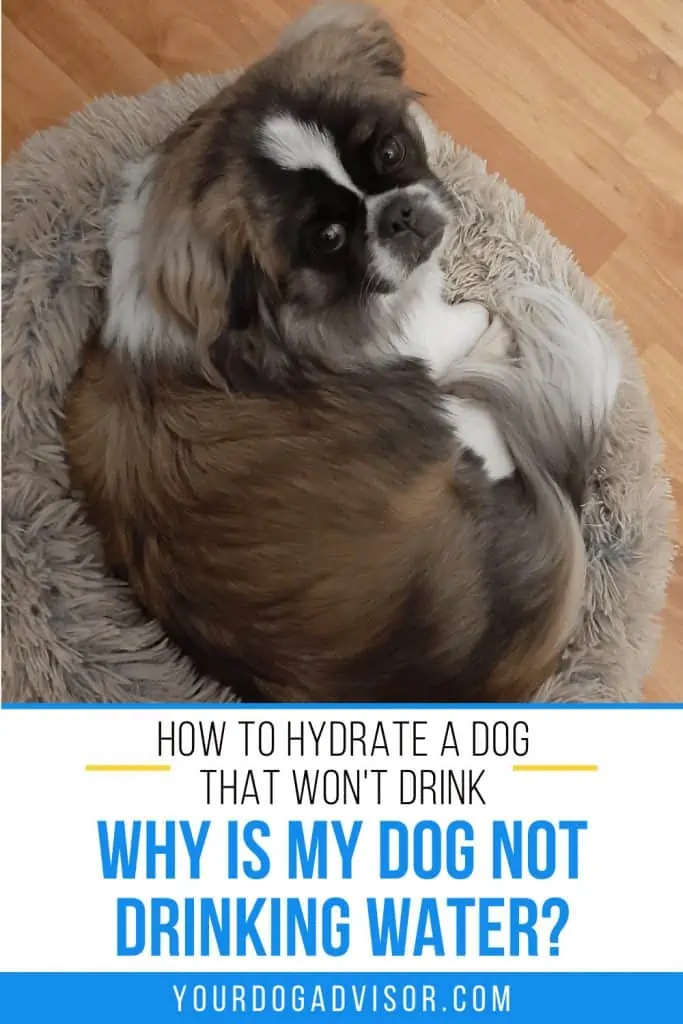

Jen Jones is a professional dog trainer and behavior specialist with more than 25 years of experience. As the founder of ‘Your Dog Advisor’ and the ‘Canine Connection’ rehabilitation center, she applies a holistic, empathetic approach, aiming to address root causes rather than merely treating symptoms.
Well known for her intuitive and compassionate approach, Jen adopts scientifically-proven, reward-based methods, encouraging positive reinforcement over punishment. Jen specializes in obedience training, behavior modification, and puppy socialization. Her innovative methods, particularly in addressing anxiety and aggression issues, have been widely recognized. Jen has worked with many of the world’s leading dog behaviorists and in her free time volunteers with local animal shelters and rescue groups.

